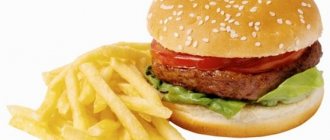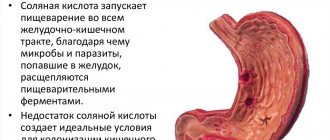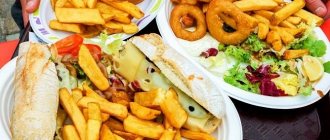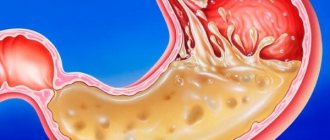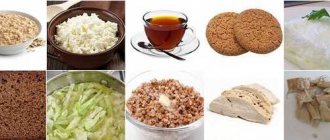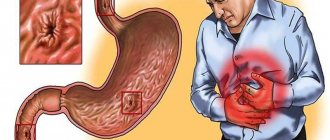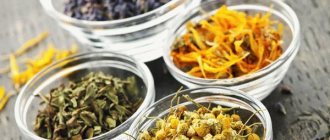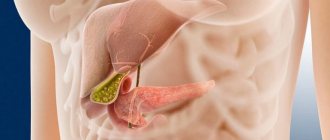- When is nutrition prescribed for high acidity?
- Foods for high acidity
- Nutrition menu for high acidity
A balanced and nutritious diet is the basis of our good health and well-being.
Today, more and more people adhere to a healthy lifestyle, thereby maintaining their health and avoiding many diseases. But what to do when the disease has already developed? When our body has a certain feature that forces us to follow a certain daily routine, diet, or take medications. Nutrition for high acidity is a specific direction in dietetics, created to meet the needs of people with dysfunction of the digestive tract. Who should eat for high acidity? What is this diet?
What is gastritis
Hyperacid gastritis is an inflammation of the gastric mucosa. This condition occurs due to increased acidity of gastric juice. Most often, this condition develops due to various nutritional disorders or stress along with infection with the bacterium Helicobacter pylori.
Causes
Gastritis with high acidity occurs due to an excess of hydrochloric acid, which causes inflammation of the stomach walls.
Internal and external factors in the development of the disease:
- External: use of medications, prolonged exposure to stress, poor diet, alcohol abuse, excessive smoking.
- Internal: various diseases of the endocrine system, metabolic disorders, hereditary predisposition, vascular dystonia.
Symptoms
Most often, with gastritis with high acidity of gastric juice, there are no symptoms and occur only during an exacerbation of the disease. The first sign of the presence of this disease is the occurrence of pain in the subcostal area. The main symptom is the presence of an unpleasant feeling of heartburn.
The following symptoms may also occur:
- constipation;
- burning;
- nausea.
With hyperacid gastritis, appetite remains the same, which is a positive thing, since the main symptoms disappear immediately after eating any food.
What types of cheese are good for gastritis?
Not all fermented milk products are allowed for gastritis. With this disease, you can eat unleavened fresh varieties of cheese. These include mozzarella, mascarpone, and ricotta. Blue cheeses are also not prohibited. However, when purchasing such a product, you should make sure that it is not expired. It is worth noting that the so-called blue cheese has an astringent property. It helps strengthen the protective layer of the stomach.
When introducing cheese into your diet, do not forget about the restrictions. You can consume only a few slices per day.
Description of the diet
Treatment of gastritis is not complete without nutritional correction; the doctor must prescribe a diet for the patient. Nutrition for high acidity of the stomach should be as gentle as possible for the gastrointestinal tract, so tables No. 1, 2 or 5 may be prescribed depending on the stage of the disease.
General principles
For gastritis, to reduce acidity, a certain diet is required, which will require compliance with the following rules:
- Avoid foods that may cause increased levels of gastric juice. These include: alcoholic and carbonated drinks, coffee, various sauces, mushrooms, black bread, white cabbage.
- Eliminate from the diet foods with high fiber content, as well as other rough elements that can affect stomach inflammation. Such products include: fish with cartilage, turnips, stringy meat, bran bread, muesli and others.
- Daily caloric intake should vary from 2200 to 2500 calories.
- Avoid consumption of cold and hot foods. The food temperature should vary from 15 to 60 degrees. This is due to the fact that cold food requires a lot of effort to digest, and hot food irritates the stomach.
- The diet should be rich in foods that reduce acidity.
- It is recommended to consume food in small portions.
Advantages and disadvantages
The advantages of the diet include:
- cooked food will be suitable not only for gastritis, but it can also be eaten constantly;
- Moderately gentle on the stomach.
There are no downsides to this diet.
Indications
The diet is prescribed to people with the following diseases:
- ulcer of the duodenum or stomach;
- chronic hepatitis;
- cirrhosis of the liver;
- acute gastritis;
- acute hepatitis;
- chronic cholecystitis;
- chronic gastritis;
- cholecystitis during recovery;
- cholelithiasis;
- gastritis during remission;
- acute cholecystitis;
- absence of pronounced intestinal pathologies.
Contraindications
The diet is contraindicated for people who have low acidity.
Herbal medicine to help the patient
Instead of regular tea, it is recommended to drink mint or chamomile decoctions. From time to time it is necessary to carry out courses of treatment with various herbs that help reduce acidity. The most effective for this, in addition to chamomile, are nettle and yarrow. You can brew them separately or use them in a mixture with other plants. What fees are recommended to reduce acidity:
- mix cinquefoil erecta, calendula and yarrow;
- two parts chamomile, one part cumin seeds and oregano herb;
- mix two parts of linden flowers with one part of flax seeds and fennel fruits;
- mix marshmallow root, valerian, chamomile flowers, immortelle and St. John's wort in equal parts.
But you should not get too carried away with such treatment, especially with drugs that reduce the production of hydrochloric acid. If there is not enough of it, then in addition to poisoning and digestive disorders, gastritis with low stomach acidity may appear. The symptoms of this disease are also unpleasant, and they cannot be immediately identified, mistaking heartburn, diarrhea and abdominal pain for manifestations of high acidity. Therefore, the most important thing is diet. But, besides this, you need to know how to reduce high stomach acidity in order to prevent complications.
Products that reduce acidity should be part of the daily diet of patients with hyperacid gastritis. When the concentration of hydrochloric acid increases, the walls of the stomach are damaged, the internal microflora is disrupted, and local immunity is reduced. Often the inflammation is complicated by ulcerative-erosive foci, leading to serious consequences, including perforation of the ulcer and oncology.
Normally, the acidity of the stomach constantly varies, which depends on the characteristics of the diet and the patient’s compliance with food discipline. However, a persistent increase requires mandatory diet correction and special treatment.
Products
For hyperacid gastritis, there is a list of foods available and prohibited for consumption.
Allowed
The list of permitted cereals includes rice, semolina, buckwheat and oatmeal. The only bakery products allowed are crackers and dried bread. The list of vegetables consists of carrots, cauliflower, pumpkin and zucchini.
Meat products are allowed in the form of lean parts of turkey, chicken and veal. Pike perch, cod and hake are the possible types of fish to eat. You can eat fruits, but not sour varieties. Among dairy products, your diet should include milk, low-fat cheese and cottage cheese. For dessert, you can treat yourself to jelly, marshmallows and marmalade.
Prohibited
All types of mushrooms, fatty, salted fish and meat are prohibited. For baked goods, puff pastries, rye, yeast and freshly baked bread are not allowed. You should not eat pearl barley, millet, barley and corn porridge.
Onions, hot peppers, cabbage, preserves, garlic and spinach are excluded from the vegetable list. The fruit set should not include citrus fruits, sour varieties and dried fruits. Sour cottage cheese, kefir, high-fat cheese, sour cream, chocolate and ice cream are excluded from the diet.
What not to eat if you have high stomach acidity
When the concentration of acid in the gastric juice is high, foods that irritate the mucous membrane and stimulate the functioning of the gastric glands are excluded from the diet.
List of contraindicated products.
- dishes containing vinegar and citric acid - marinades, spicy pickles;
- excessively fatty foods - lard, ham, deep-fried foods, mayonnaise, duck, goose, lamb;
- sausages and smoked products - salami, cervelat, raw smoked sausage, brisket;
- salted and smoked fish;
- canned meat and fish;
- cereals – pearl barley, barley;
- Rye bread;
- semi-finished products;
- hard-boiled eggs;
- fermented milk drinks – kefir, tan, fermented baked milk;
- spices – hot pepper, chili, adjika, mustard, garlic, onion, horseradish;
- cheeses, especially those with mold and high fat content;
- strong meat and fish broths;
- cabbage soup, borscht, okroshka;
- legumes – beans, peas;
- ice cream;
- bitter chocolate;
- alcohol of any strength;
- caffeine-containing drinks – strong tea, coffee, energy tonics;
- mushrooms in any form, mushroom broths;
- baking from butter and puff pastry;
- dried fruits, dates, figs;
- fast food;
- sour fruit juices, citrus juices;
- carbonated drinks – lemonades, Coca-Cola, tonics, kvass;
- sour berries and fruits - citrus fruits (lemons, grapefruits, oranges, limes), all types of currants, gooseberries, lingonberries, viburnum, raspberries, cranberries, rhubarb, grapes, strawberries, plums;
- spicy vegetables - black and green radishes, radishes, tomatoes, bell peppers, turnips, cabbage.
Sample menu for the week
When dieting for high stomach acidity, you can use the following examples to create a menu for the week:
Option #1
- Breakfast. Carrot zrazy with fruits, milk tea.
- Lunch. Low-fat cottage cheese ground with sugar.
- Dinner. Stewed vegetables with veal, vegetable soup with breadcrumbs, compote.
- Lunch. Carrot pudding, tea.
- Dinner. Mashed potatoes, steamed fish, rosehip infusion.
- Snack. A glass of milk.
Option No. 2
- Breakfast. Boiled buckwheat porridge, rosehip infusion.
- Lunch. Fruit jelly.
- Dinner. Steamed chicken soufflé with stewed vegetables, pureed vegetable soup, juice.
- Lunch. Long pastry cookies, green tea.
- Dinner. Lazy dumplings, tea.
- Snack. A glass of curdled milk.
Option #3
- Breakfast. Low-fat cottage cheese casserole, milk tea.
- Lunch. Baked apple.
- Dinner. Fish pudding with a side dish of potatoes, chicken broth with breadcrumbs, compote.
- Lunch. Fruit jelly.
- Dinner. Rice pudding, steamed chicken cutlets, weakly brewed black tea.
- Snack. A glass of milk.
Aspects of diet for hyperacidity
Foods that irritate the stomach are all animal fats, indigestible fiber or fiber, gases, and acidic foods. The temperature of food and its consistency also contribute to trauma. The diet should be based on easily digestible semi-liquid food, which does not require increased energy consumption for digestion.
The diet includes lean meats, sea fish, and boiled vegetables, which reduce the aggressiveness of hydrochloric acid. Heat treatment of products is also required: steam, cooking, steam exposure. It is recommended to cook soups in weak meat or vegetable broth; it is important to grind the minced meat for cutlets several times.
Note! Dishes prepared from mucous components perfectly envelop the stomach, eliminating the risk of injury to the mucous epithelium.
Diet specifics
For gastritis of this type, doctors recommend adhering to a therapeutic diet; the diet should have a high energy value and an optimal balance of substances. You should exclude foods that have an aggressive effect on the gastric mucosa, thereby increasing the secretion of hydrochloric acid. Too cold and hot dishes are prohibited for consumption. The basis of the diet should be easily digestible food.
In the acute stage
When the inflammatory process in the stomach worsens, the patient will encounter the following symptoms of the disease:
- diarrhea;
- vomit;
- strong pain;
- stomach bleeding;
- constipation.
If gastritis is in the acute stage, dehydration may occur, which is accompanied by:
- pallor of the skin and mucous membranes;
- general weakness;
- thickening of the liquid fraction of blood.
If symptoms of acute gastritis are detected in the first days, only heavy drinking and fasting are allowed. Drinks should be in the form of physiological solutions and liquids that can relieve inflammation and irritation of the stomach walls. Starting from 2-3 days, you can include the consumption of nutritional components in your diet.
For diarrhea, diet 1a is required, and for constipation, diet 1b. The diet should have a reduced amount of proteins, carbohydrates and fats. And at the first stage of treatment, you should completely exclude foods that even partially stimulate the secretory function.
For chronic gastritis
When chronic gastritis is in remission, the patient is shown treatment table No. 5. This diet contains a limited amount of lipids and is low in calories. Refractory animal fats, foods rich in extractive substances and roughage are excluded from intake. This therapeutic diet can significantly reduce the load on the gastrointestinal tract. It must be observed for at least 2 years.
The main task of the diet for chronic gastritis with high acidity is to provide the patient with adequate nutrition, as well as reduce gastric secretion, improve the functioning of the biliary tract and liver.
In culinary processing of products, boiling and steaming are allowed. It is not recommended to eat food prepared by baking and stewing. All fried foods, as well as vegetables high in fiber, are prohibited.
For acute erosive gastritis
This type of gastritis begins to develop after concentrated acids and alkalis enter the stomach, as a result of which the gastric mucosa is corroded and its rough layers are destroyed. This form of the disease often develops into peptic ulcers or promotes the formation of scars.
During the acute stage of the disease, as well as during the recovery period, it is recommended to follow diet No. 1. It represents an exception from the diet of foods that in any way irritate the gastric mucosa.
Increased acidity - causes and characteristics of pathology
The diagnosis of hyperacidity of gastric juice is made when the pH of the organ contents reaches 0.9–1.2. The main reasons for the development of gastric secretion disorders are associated with poor diet, smoking, exposure to stress and uncontrolled use of analgesics. The irritating effect of these factors on the gastric mucosa leads to an imbalance between the acidic and protective components of the digestive juice.
A number of stomach diseases are acid-dependent. This means that for their successful treatment, normal acidity is required for most of the day. Such diseases include:
- hyperacid gastritis;
- gastroduodenitis;
- erosions of the upper digestive tract;
- stomach and duodenal ulcers;
- functional disorders of the stomach;
- stomach bleeding;
- gastroesophageal reflux.
Recipes
Fish and potato pudding
Procedure:
- Peel and boil 50 grams of potatoes, then drain the water.
- Using a masher, crush the potatoes with 30 milliliters of warm milk.
- Remove bones and skin from 100 grams of fish, boil, cool and finely chop.
- Mix potatoes with fish, add 5 grams of butter, one egg yolk and whipped whites until stiff.
- Grease the mold with 5 grams of butter, lay out the prepared mass, sprinkle with 10 grams of crackers, close the lid and simmer for 20 minutes in a steam bath.
Steamed chicken soufflé
Procedure:
- Boil 100 grams of chicken fillet, pass it through a fine grinder, repeat several times.
- Boil 10 grams of rice.
- Combine fillet, rice, 30 milliliters of milk in a bowl.
- Mix 1 yolk with 5 grams of melted butter and add to the total mass.
- Beat the whites and also place in a bowl.
- Treat the baking dish with oil, pour the mixture into it and cook in a steam bath for about 20 minutes.
Carrot pudding
Procedure:
- Grate 8 large carrots on a large grater and place in a saucepan.
- Add 150 grams of boiled milk and 60 grams of butter.
- Simmer covered until soft.
- Add 75 grams of semolina in a thin stream, stir constantly and cook for about 10 minutes.
- Separate the whites and yolks of 3 eggs, beat the first ones to stiff peaks.
- Mix the cooled carrot mass with 25 grams of sugar, 5 grams of salt and yolks, mix and combine with the whipped whites using gentle movements.
- Grind 25 grams of wheat crackers and sprinkle them into a mold greased with butter.
- Place the pudding mixture in a mold and bake in the oven at 180 degrees for 15-20 minutes.
- Serve with milk sauce.
The effectiveness of traditional medicine
There are a huge number of folk remedies and techniques that can be used to reduce acidity levels. Such products have a calming effect. Before using them, you should consult your doctor. Many of these recipes are based on natural honey and other bee products. Also used to treat hypersecretion are pumpkin oil, milk, aloe, shepherd's purse, sea buckthorn oil, and lettuce.
Effective recipes to combat high acidity of stomach juice:
- Mix honey and aloe juice in equal proportions. Take 1 tablespoon three times a day for one month.
- Dissolve one tablespoon of natural honey in ½ cup of warm water. Take the drink thirty minutes before meals and after each meal.
- Add twenty drops of propolis alcohol tincture to a glass of milk and drink before meals.
- A decoction prepared from shepherd's purse will help get rid of severe pain and spasms. Preparation: dilute one tablespoon of the mixture in a glass of water, cook for five minutes over low heat. Take for fourteen days.
Increased acidity is the cause and consequence of many pathologies of the gastrointestinal tract, requiring an integrated approach to treatment. For therapy to be effective, pay due attention to the diet prescribed by your doctor.
Today, gastritis can be called the disease of the century; more than 50% of the population of all nations and ages are familiar with it. This diagnosis is often made in the first hours of a newborn’s life, and although it does not belong to a number of serious diseases, there is still something to be afraid of, because gastritis is a provocateur and the basis for the development of many other unpleasant health problems.
Often, with gastritis, metabolism is disrupted, pain is a concern, the patient experiences weakness and malaise for a long time, and the acidity of the juice in the stomach is disturbed; it may be within the normal range, or it may be much different from it, and be above or below the permissible limit . But most often the disease occurs accompanied by increased acidity in the stomach, which requires the infringement of one’s lifestyle habits, and most importantly, forces one to reconsider one’s diet. It is this type of disease that we will talk about in detail today.
Tips and tricks
Not only recipes for main dishes, but also healthy drinks will help you diversify your diet.
Carrot-apple drink
Procedure:
- Wash and core 45 grams of apples, leave the skin on, finely chop the fruit and pour 150 grams of boiling water over it.
- Leave for two hours with the lid closed.
- Add 15 grams of sugar to the infusion and strain.
- Peel and grate 50 grams of carrots, squeeze out the juice through cheesecloth.
- Combine carrot and cooled apple juice.
Anise tea
Procedure:
- Pour 10 grams of anise leaves into half a liter of boiling water.
- Leave in a thermos for an hour or two.
- Drink half a glass of infusion no more than 4 times a day.
Beetroot and carrot juice
Procedure:
- Peel one small beet and carrot, cut into arbitrary pieces and cook until tender.
- Place the prepared vegetables in a meat grinder, let stand and drain the resulting juice.
- Pour 230 milliliters of water over the squeezes and boil for 10 minutes.
- Add 20 grams of sugar and 0.4 grams of citric acid to the broth, boil, strain and cool.
How to eat healthy
- you need to eat fractionally, preferably little by little and 5-6 times a day, so that the stomach does not remain empty;
— the temperature of the food should be close to the temperature of the human body; it is undesirable to eat too cold or hot dishes;
- it is necessary to abandon low-fat diets, which lead to gastritis;
— it’s better to steam or boil food, and the food should be finely chopped, you can even puree it;
— food should be chewed thoroughly and try not to overeat;
- It is not recommended to eat at night; the main food load should be in the first half of the day.
Basic nutrition rules
Regardless of what purpose the specialist or patient is pressing, which will cause an increase or, conversely, a decrease in stomach acidity, it is necessary to follow several basic rules, which include the following measures:
- Changing the nature of nutrition. Meals should always be frequent and small. It is forbidden to eat large portions of foods, as the stomach becomes overstretched and the parietal cells do not produce enough acid. This causes fermentation, bloating and abdominal pain.
- It is not recommended to consume fried or smoked foods, as the carcinogens they contain increase the risk of not only acidity disorders, but also malignant processes.
- Drinking enough liquid. According to many patients, the most beneficial is water with lemon added. It leads to increased acidity, which is dangerous for patients with initially reduced acidity levels.
- Complete exclusion of alcohol-containing products from the diet. To give up smoking.
- Limiting the use of medications. It is recommended to exclude medications as much as possible if they do not affect acidity. Continuation of therapy is mandatory when their deficiency can be life-threatening.
- Elimination of stress, emotional overload and other problems with the functioning of the nervous system.
Normalizing nutrition prevents the development of high stomach acidity. In order to prevent hydrochloric acid from accumulating in the stomach cavity, it is necessary to regularly adhere to fractional meals.
Among the foods that reduce the level of hydrochloric acid are:
- Dairy products that are not fermented include milk, cottage cheese and cheese.
- Fruit and vegetable dishes.
- Low-fat boiled meats.
- Boiled lean fish.
- Whole grain porridge.
Read: Pomegranate is eaten with or without seeds, we tell you how to do it correctly
Before creating the required diet, it is imperative to consult with a specialist. Only a doctor will be able to accurately identify the cause and, based on it, choose the most suitable and missing products for the body. A prerequisite is the selection of products taking into account calorie content and nutrient composition.
If necessary, the doctor selects a medicinal drink consisting of mineral waters and other drinks. Including them in the diet without prior examination can cause serious consequences for the body.
Taking water
Water with bicarbonate will help normalize acidity
Currently, in pharmacies and stores you can find a large amount of water that is used for medicinal purposes. Among them are sulfate, alkaline, chloride and other types of drinks.
The choice depends on the type of pathology for which the patient consults a doctor. Against the background of increased acidity, which leads to gastritis and peptic ulcers, it is recommended to include water containing bicarbonates in the diet.
The use of this mineral water leads to a decrease in the level of hydrochloric acid due to the entry of its ions with bicarbonate, which is an alkaline solution. As a result of a complex chemical reaction, neutralization occurs.
In addition, bicarbonates absorbed into the internal environment come into contact with a hydrogen ion. It is these ions that are involved in the production of gastric acid. During the treatment, the patient notes an improvement in well-being, a decrease in nausea and heartburn.
Great importance is also paid to its temperature; it is recommended to use heated water, which eliminates excess carbon dioxide content. The volume of liquid drunk should be up to a liter. It must be taken before eating food, since on an empty stomach the amount of hydrochloric acid is high.
How to avoid heartburn?
Knowing only foods that increase acidity can already prevent its occurrence. And for this you will need to completely review your menu and make appropriate adjustments.
Here are the basic rules that you will need to follow:
- Can't convey. For this purpose, the fractional feeding method is used. That is, the usual portions are divided into 5-6 doses. And it is advisable that the last dinner be before 18:00 and no later, because again this puts a strain on the stomach. As a result, a burning sensation occurs.
- The menu should be healthy and dietary. If it is impossible to compose or diversify it yourself, you need to contact nutritionists.
- Take medications. In addition to them, you can prepare decoctions based on medicinal herbs (the attending physician will give detailed instructions!). By the way, these decoctions have a very bitter taste, so they are rarely used to treat heartburn.
Speaking about foods that increase stomach acidity, you should avoid sweet, sour, spicy, etc.
Causes
As a result of the fact that increased or decreased acidity is not a normal option, it is necessary to take into account that each of the conditions requires correction and the possible prescription of medications. Before starting treatment, it is necessary to establish the cause that led to this condition, among them are:
- Eating disorder. This group includes a large number of factors, among which are general dietary disorders with long breaks leading to hunger, lack of frequent and split meals, and the inclusion in the menu of foods rich in salt, spices, refined oils and other substances.
- Consumption of alcohol and alcohol-containing products. These drinks contribute to the rapid development of high acidity. With one-time use, acidity will increase for a short period of time, but regular use causes a persistent disruption of homeostasis.
- Smoking. The process of smoking, regardless of the type of product, leads to stimulation of the parietal cells of the stomach, as a result of which their functional activity increases.
- Stressful influences. Regular stressful situations largely cause an increase in acidity, which forms an inflammatory process and a decrease in the body's defenses.
- Insufficient intake of vitamins. This reason is similar to the problem of malnutrition, since products that contain them are recommended to be consumed in a non-heat-treated form.
- Taking medications. There are a large number of drugs that can increase the level of acidity in the stomach. If it is impossible to cancel them, it is recommended to combine medications with agents that have protective reactions on the mucous membrane.
- The presence of tumor processes in the brain or pancreas, which cause disruption of communication between the nervous system and parietal cells. The most common type of hormonally active tumor is gastrinoma.
Read: Gluten: harm and benefit. Products containing gluten
